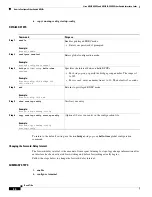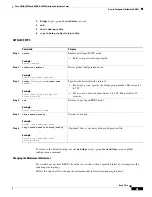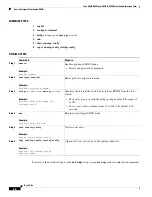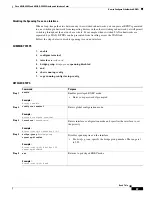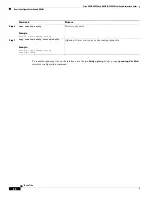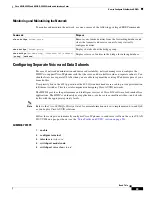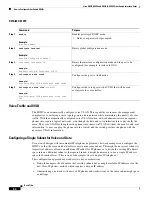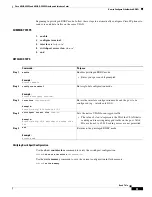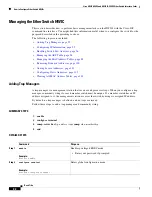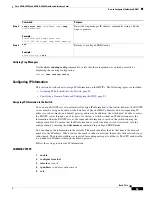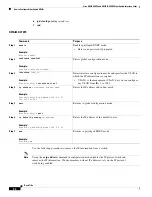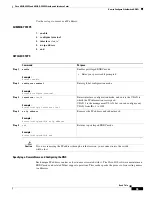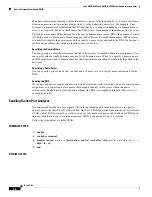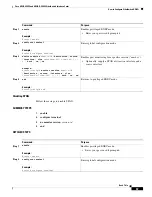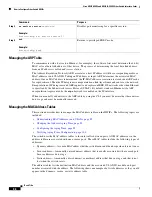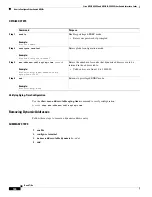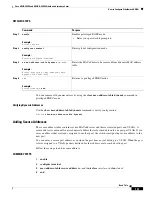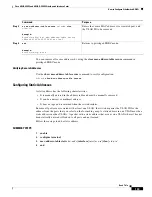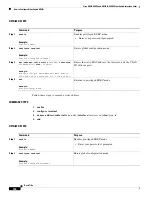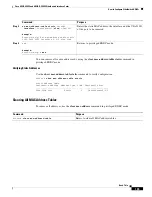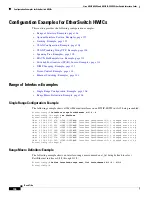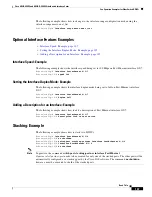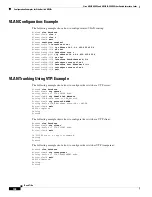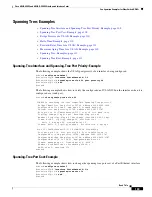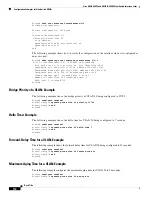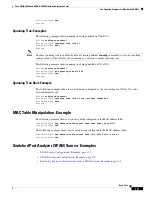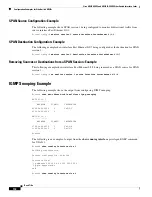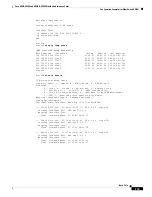
Cisco HWIC-4ESW and HWIC-D-9ESW EtherSwitch Interface Cards
How to Configure EtherSwitch HWICs
98
Book Title
Managing the ARP Table
To communicate with a device (on Ethernet, for example), the software first must determine the 48-bit
MAC or local data link address of that device. The process of determining the local data link address
from an IP address is called
address resolution
.
The Address Resolution Protocol (ARP) associates a host IP address with the corresponding media or
MAC addresses and VLAN ID. Taking an IP address as input, ARP determines the associated MAC
address. Once a MAC address is determined, the IP-MAC address association is stored in an ARP cache
for rapid retrieval. Then the IP datagram is encapsulated in a link-layer frame and sent over the network.
Encapsulation of IP datagrams and ARP requests and replies on IEEE 802 networks other than Ethernet
is specified by the Subnetwork Access Protocol (SNAP). By default, standard Ethernet-style ARP
encapsulation (represented by the
arpa
keyword) is enabled on the IP interface.
When you manually add entries to the ARP table by using the CLI, you must be aware that these entries
do not age and must be manually removed.
Managing the MAC Address Tables
This section describes how to manage the MAC address tables on the HWICs. The following topics are
included:
•
Understanding MAC Addresses and VLANs, page 99
•
Changing the Address Aging Time, page 99
•
Configuring the Aging Time, page 99
•
Verifying Aging-Time Configuration, page 100
The switch uses the MAC address tables to forward traffic between ports. All MAC addresses in the
address tables are associated with one or more ports. These MAC tables include the following types of
addresses:
•
Dynamic address—A source MAC address that the switch learns and then drops when it is not in use.
•
Secure address—A manually entered unicast address that is usually associated with a secured port.
Secure addresses do not age.
•
Static address—A manually entered unicast or multicast address that does not age and that is not
lost when the switch resets.
The address tables list the destination MAC address and the associated VLAN ID, module, and port
number associated with the address. The following shows an example of a list of addresses as they would
appear in the dynamic, secure, or static address table.
Step 3
no monitor session
session-id
Example:
Router(config)# no monitor session
37
Disables port monitoring for a specific session.
Step 4
end
Example:
Router(config)# end
Returns to privileged EXEC mode.
Command
Purpose

